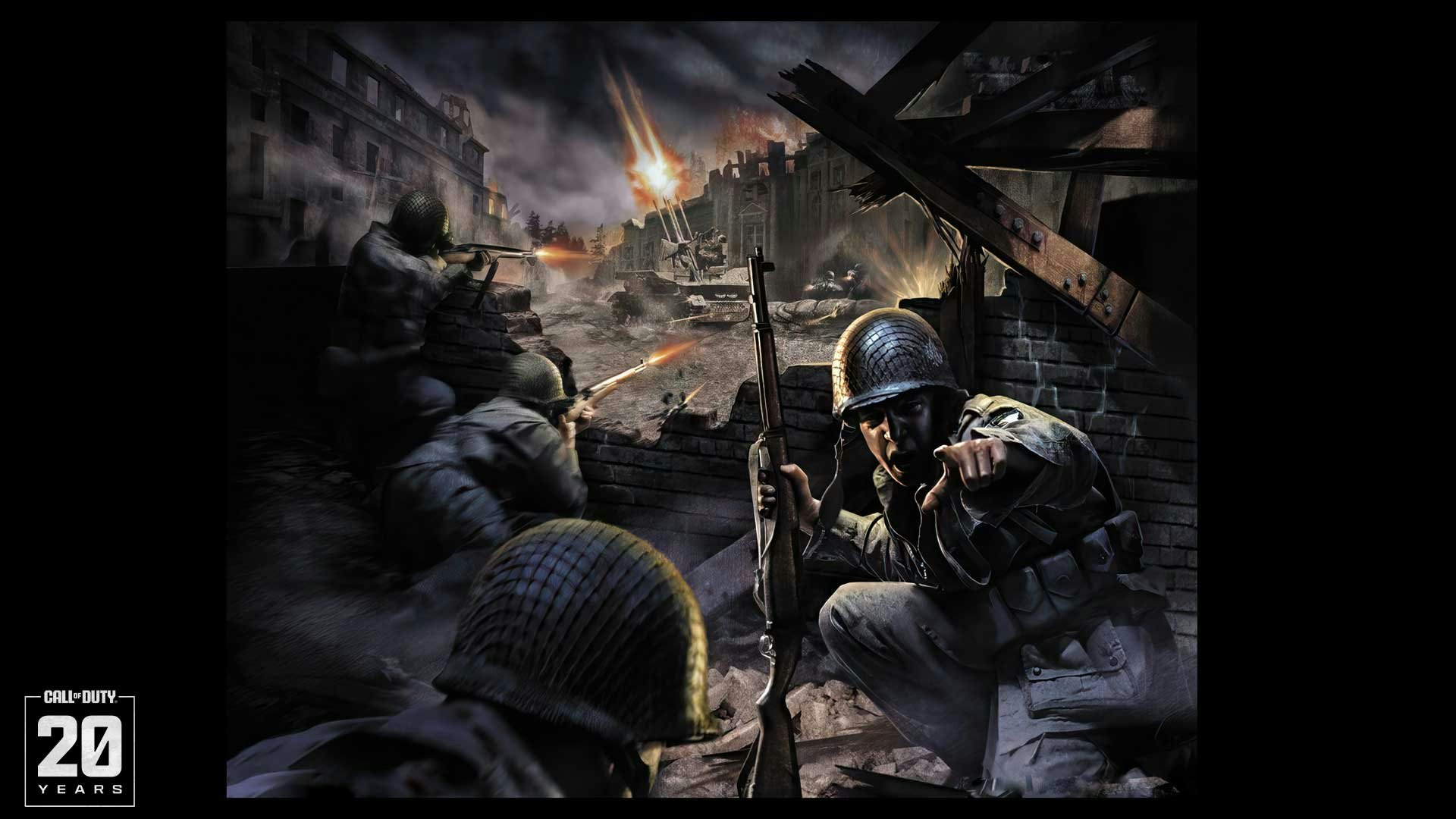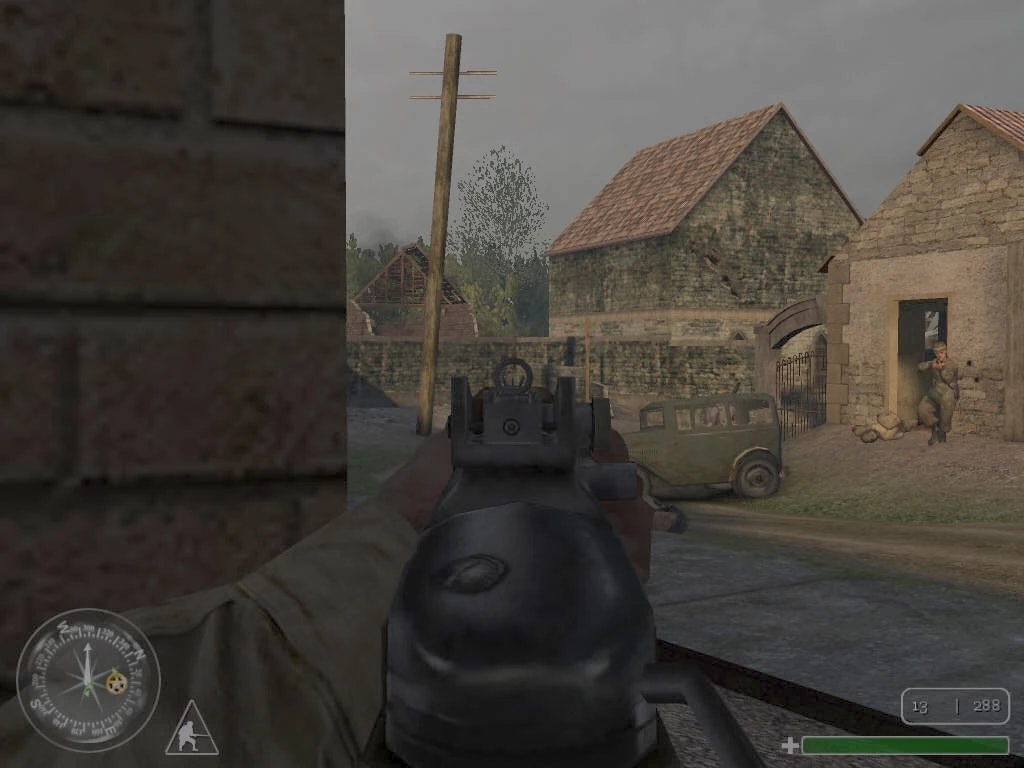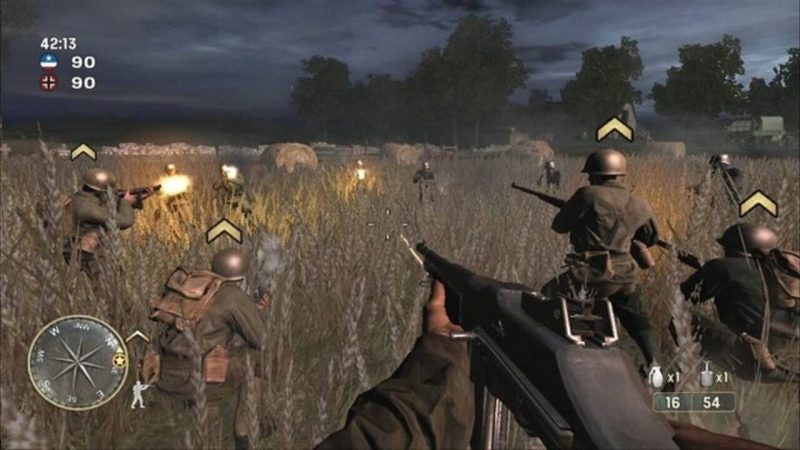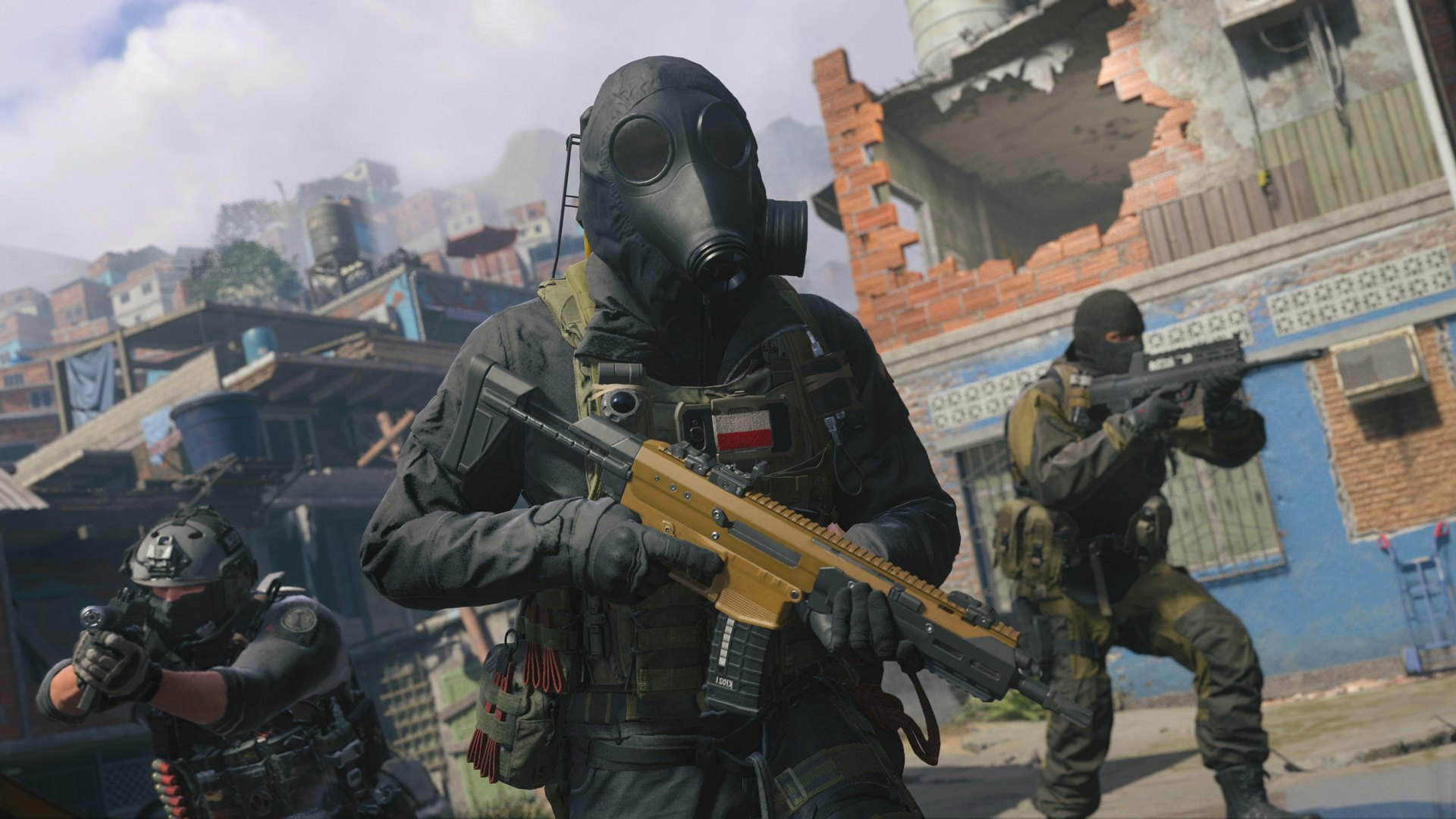
Twenty years ago, a WWII game competing with the then-king of battle games served as an unsuspecting springboard for the biggest, and arguably most important, video game franchise of the last 25 years. The game was Call of Duty, and it redefined gaming for both players and those working in the industry.
The original Call of Duty was a well-reviewed, respected game in its day, but nothing about the WWII shooter indicated this would be one of gaming’s most successful franchises. The genre was just gaining momentum, and at the time, it was largely competing with other similar titles, most notably Medal of Honor. Several members of the team that created Medal of Honor actually went on to help build Infinity Ward, the company that crafted CoD.
“I don’t think the audience, or even Activision realized what was happening at the time. It was just this phenomenon that sort of took off. Since then it’s been a rollercoaster,” Keith Arem, current president of PCB Productions and the performance director of 2003’s Call of Duty, tells Inverse. Arem was brought in toward the end of the production of the first game to help reshape the performances.

The team aimed to surpass Medal of Honor in every way, notably by including different perspectives in both gameplay and the story, with players seeing the combat from the viewpoint of American, British, and Soviet soldiers. They even managed to wrangle much of the cast from the acclaimed miniseries Band of Brothers for the game. Jason Statham and Giovanni Ribisi were among the cast for the first installment.
Call of Duty was released in October of 2003 to rave reviews. It even won Game of the Year at the D.I.C.E. Awards. It was also a sizable hit, selling more than 4.5 million copies to date. Naturally, success like that paved the way for a sequel. Arem stayed on board as a key part of the team for 2005’s Call of Duty 2 (and for many future installments as well).
The team emphasized the cinematics and storytelling, but the team did include a multiplayer mode, which was crucial. In that first game, the multiplayer was added as more of an “in addition to” rather than a core focus of the game. However, the inclusion of that mode is what set the series up for game-changing levels of success in the years that followed. For as much praise as the game received for its campaign and storytelling, it was the multiplayer that was helping to drive sales.

“Fans loved the characters and the stories, but they loved interacting with their friends,” Arem explains. “There was this balance. You couldn’t have one without the other.” Internally, the developers loved the multiplayer aspect of the game as well. “We’d be playing constantly,” Arem reveals. “It would shut down our business we would play so much.”
The first three installments in the series kept the WWII setting but the defining moment would come in 2009 with the release of Call of Duty 4: Modern Warfare. Set in modern times, it provided a fresh take on the shooter that gamers went crazy for. Between the change in setting to set it apart from other shooters of that era, coupled with an increased focus on the multiplayer experience, it was an undeniable, measurable point in history. There was what the series had been and now, what it would become.

It was also a key moment, firmly in the PlayStation 3 and Xbox 360 console era, which provided reliable access to online gaming for console owners. This allowed for a big shift in online gaming on consoles. “It was better to have standardization,” Arem explains. “The consoles were so much better for us to develop for because we knew exactly what we were developing for to make those platforms sing. So when it exploded we were like, ‘Finally!’”
It was the perfect storm: the right game at the right time.
In the years that followed, by embracing online multiplayer and modern settings, the series blossomed into a juggernaut. In 2021, publisher Activision revealed that the Call of Duty series surpassed 400 million copies sold, with the franchise hitting its apex in 2010 with the release of Call of Duty: Black Ops, which sold more than 31 million copies. Things don’t appear to be slowing down either as 2022’s Call of Duty: Modern Warfare II became the fastest game in the series to reach $1 billion in sales. This is to say nothing of Call of Duty: Mobile, which is responsible for hundreds of millions more in revenue. But the impact has also been felt behind the scenes in ways that are invisible to players.

“It has really changed the industry from the inside,” Arem explains. “It pays off in what you’re seeing in the production ways that we do things in the video game industry, the way that our scripts are defined, the way that our pipelines are defined, the way actors work. Union contracts incorporate so much of this work that we’ve done. Call of Duty was one of the most important titles to showcase why we do what we do.”
Modern gaming is inextricably linked to Call of Duty. It helped to revolutionize online gaming and is still, in many ways, the gold standard for online shooters. It’s also the fourth-biggest video game franchise in history, in terms of total copies sold, trailing only Mario, Tetris, and Pokémon. No series since the turn of the millennium has performed better commercially. Want to understand how important CoD is to gaming? Just look at Microsoft’s recent blockbuster acquisition of Activision Blizzard. That mammoth $68 billion deal traces its roots back to a comparatively humble, well-liked WWII game.
“Call of Duty has been one of the most iconic franchises of any video game, I think, that’s come in the past 20 years,” Arem concludes. “I’m just honored to be part of that legacy.”







